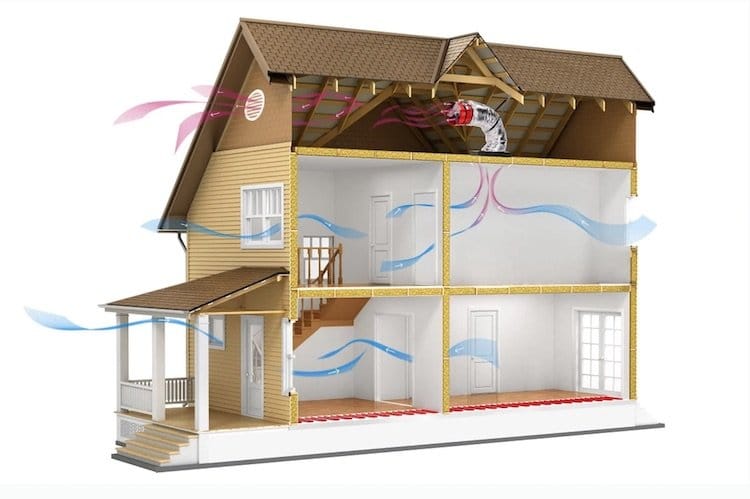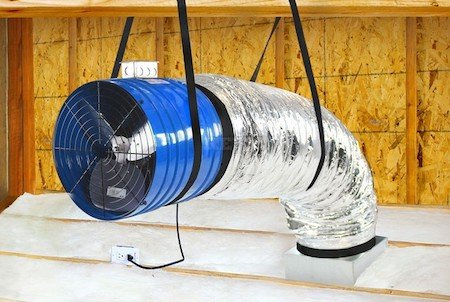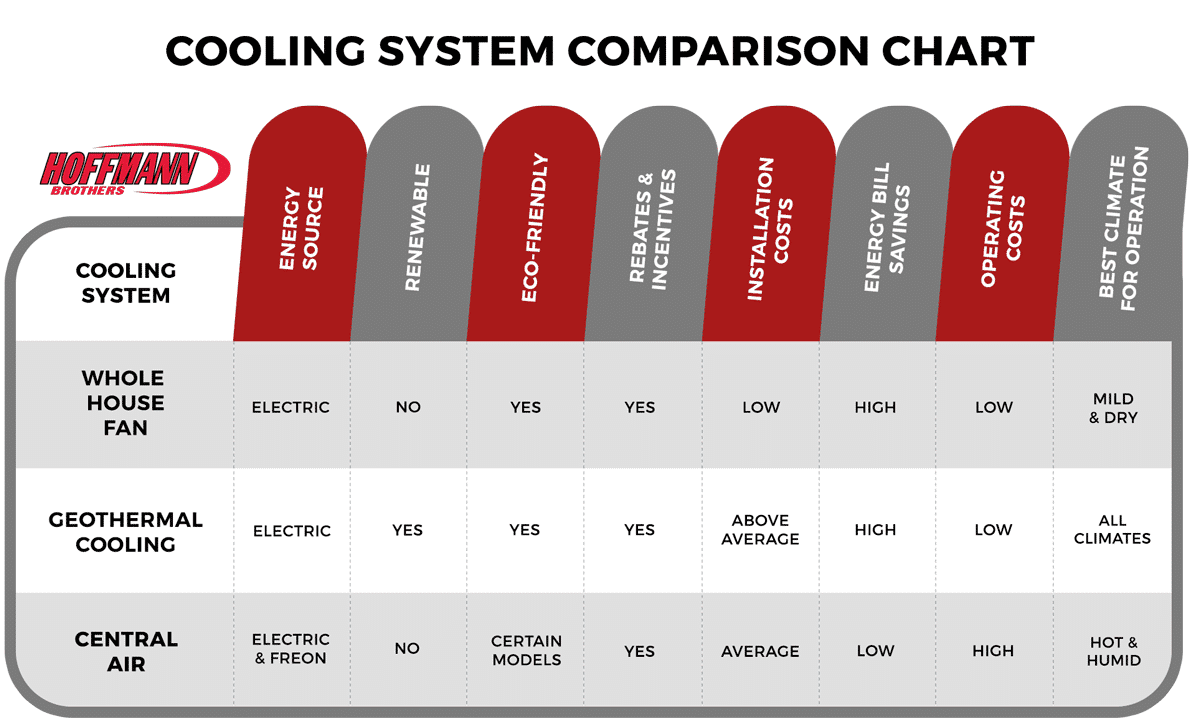
1. Fast Performance
2. Reduces Need for AC
3. Affordable to Purchase
4. Low Operating Costs
5. Quiet Operation When Properly Installed
6. Improves Indoor Air Quality (IAQ)
7. Friendly to the Environment
8. Easy Installation
1. Fast Performance
Whole house fan effectiveness shows when it cools a house 10 degrees as soon as you turn it on and can continue to cool the entire home up to 30 degrees. It can cool the attic by up to 50 degrees.
2. Reduces Need for Air Conditioning
Because a whole house fan can quickly and significantly cool your house, your attic stays cooler and your A/C won’t have to work so hard to maintain a comfortable temperature throughout the property. In fact, you may not need to turn on your central air conditioning except on the hottest of summer days.
3. Whole House Fans are Affordable to Purchase
The cost to buy a Whole house fan system is less than the cost for central air conditioning, which may also make the professional whole house installation cost a lot more appealing and affordable. You still save!
4. Low Operating Costs
Whole house fan energy savings can be up to 90% less than if you ran your air conditioning instead, which also means the cost to run whole house fan systems is lower too. Your energy bill could see a sizable reduction.
5. Whole House Fans are Quiet
The Department of Energy notes that “Whole house fans can be noisy, especially if improperly installed.” Choosing a licensed contractor is the smart choice to avoid the downside of a job done incorrectly. However, A quiet whole house fan means no more adjusting the TV volume every time the A/C kicks on just to hear your favorite show! Instead, you can keep that volume steady and you will hear only a hum while the whole house fan is running.
6. Improve Indoor Air Quality (IAQ)

7. Friendly to the Environment
Whole house fans provide a “greener” option for cooling your home because they use the fresh air from outside to replace the hot, polluted indoor air. In fact, electric companies in some states even issue rebates as an incentive for installing and using them over A/C.
8. Easy Installation
For safety, installation should be completed by a licensed electrician who can complete this straightforward job. An electrical contractor will also advise fan sizing and power measured in cubic feet per minute(CFM) and instruct how to use a whole house fan.

Whole House Fans vs. Geothermal Cooling
Geothermal heating and cooling pushes and pulls energy out of the ground with a heat pump connected to a series of buried pipes called geothermal loops filled with a water solution. All work seamlessly together to heat and cool your home.
Pros of Geothermal
- Free – after heat pump installation, the earth freely provides this energy to users
- Environmentally friendly – It doesn’t pollute. Geothermal cooling uses electricity, not fossil fuels, giving it the lowest carbon footprint of any heating/cooling system.
- Renewable – 75% of the energy needed comes out of the ground.
- Cost efficient
- Tax incentives for choosing such a “green” cooling system.
Cons of Geothermal
- Installation involves drilling four 200-foot wells and tying them together.
- More expensive equipment and installation costs
- Longer installation process
- Damaged lawn/landscaping through installation
Whole House Fans vs. Central Air
These two cooling systems can complement one another but should never be run at the same time.
Pros of Central Air
- Can set a timer/schedule to turn on
- Can set the thermostat to hold a certain temperature
- Most homes are already equipped with central A/C
- Better for hot, humid climates
Cons of Central Air
- Louder operating noise
- More expensive operating and installation costs
- Few tax incentives
- Uses chemicals like Freon to function i.e. not as environmentally friendly
Other Helpful Resources
Hoffmann Brothers installs brands such as the American-made QuietCool whole house fans among others to help keep your house cool and well ventilated. Contact our team today to get a quote and discuss the best whole house fan for your home.
Common FAQ’s About Whole House Fan Benefits
Mild and dry climates are ideal for whole house fan usage. When the outside temperature dips lower than the indoor temperature (typically at night), you’ll experience the greatest benefits. Plus you can also learn the basics of how they work.
While the two systems do complement each other, a whole house fan should be considered an additional resource and should not be used at the same time as your central AC.
Yes. Especially when compared to central AC, whole house fans provide cooling with lower energy use, attributing to a more eco friendly cooling choice.



